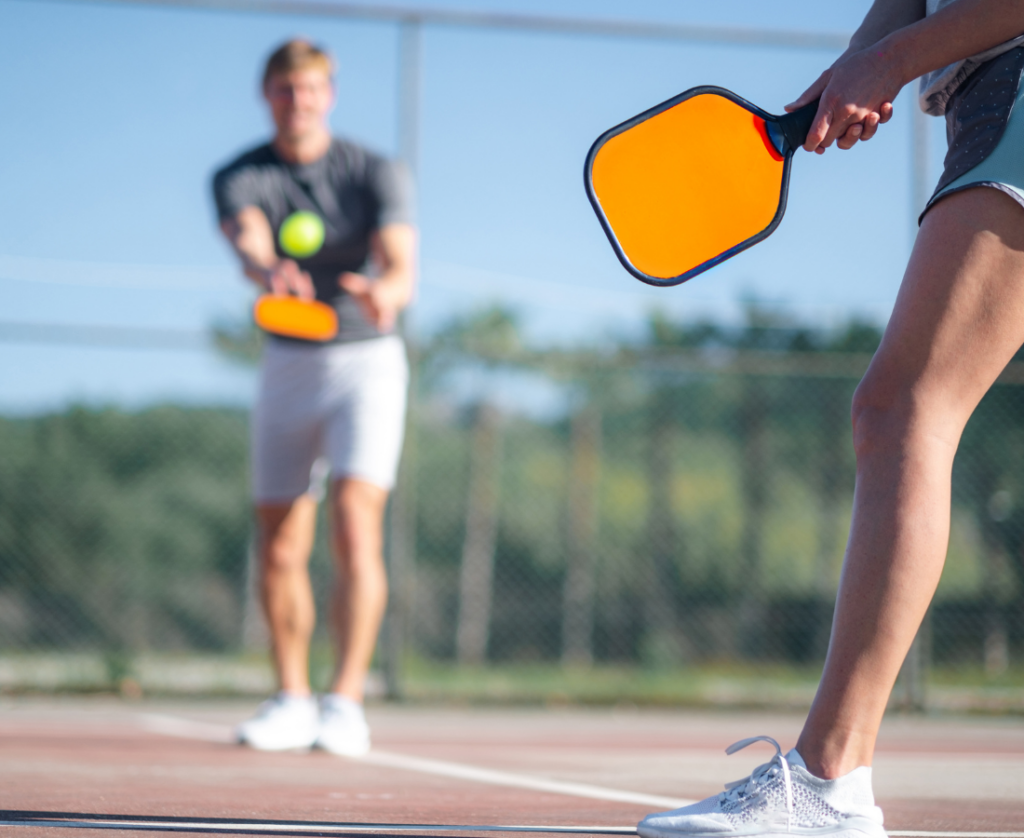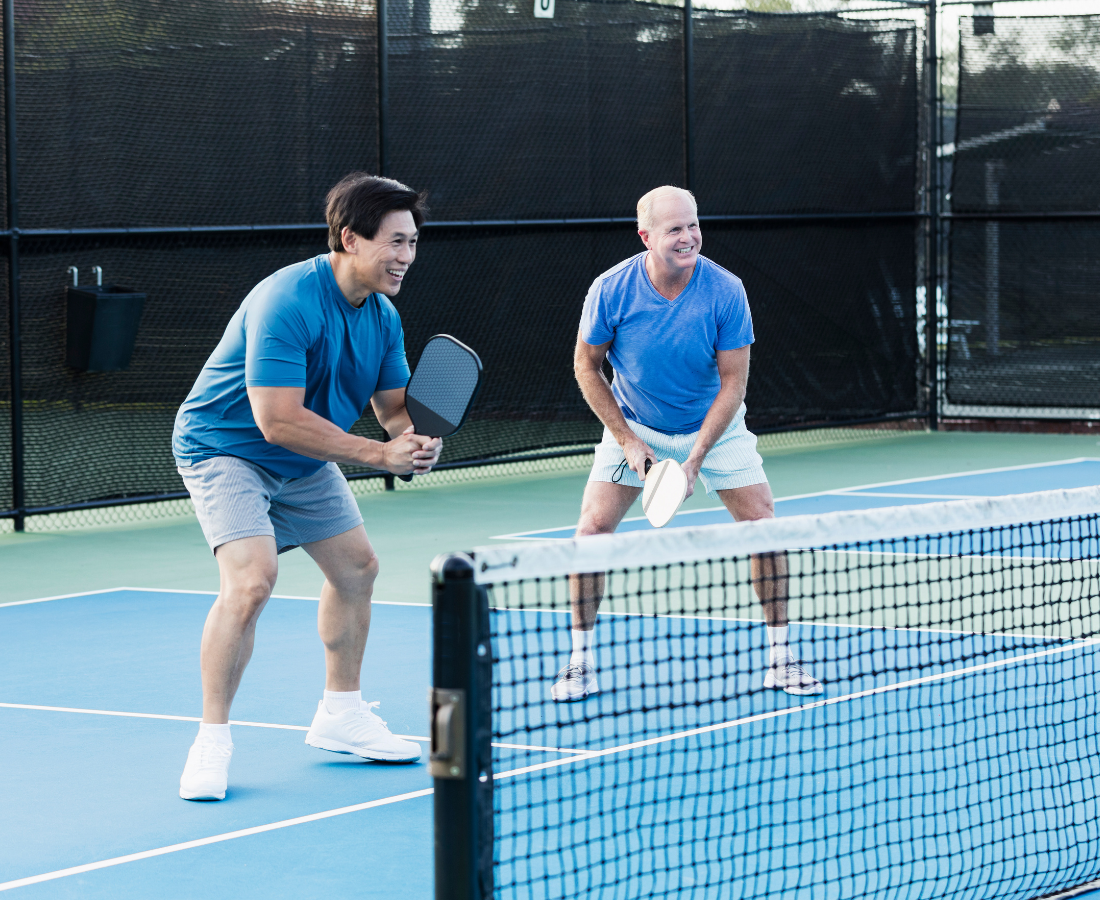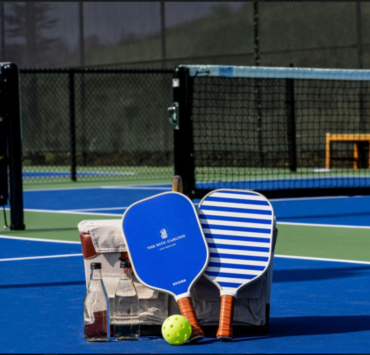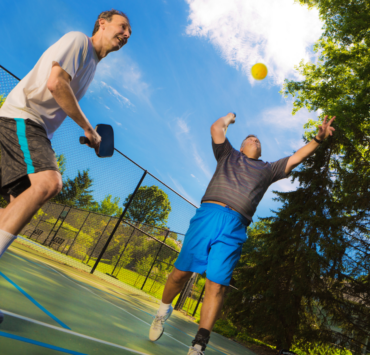Is there anything better than launching a killer shot past your opponent? Whether you win a point with a dink, drop, or drive, it’s a great feeling to know you’ve executed a perfect shot.
Your grip and stance are key contributors to the success of a pickleball shot. The wrong grip or stance can lead to unforced errors and, eventually, losses. No one wants that! In this guide, we’ll take a closer look at how to prepare your grip and stance in between shots to ensure you set yourself up for success. Let’s dive in!
Why Your Grip and Stance Matter in Pickleball
When you play out a pickleball point, there’s a lot to think about. Where will your opponent’s shot land? How will you get there? How are your opponent’s positioned on the court? The list goes on and on.
It can be easy to forget about your grip and stance, but they are often the difference makers between executing a good shot and a poor one.
Slight adjustments to your grip can help you place a shot better or add some spin that can confuse your opponent. As your game improves, you’ll learn which subtle grip adjustments help you execute your game plan.
Your stance can be easy to overlook, but it impacts mobility and reach. Having a wider stance where you shift back and forth makes it easier to react during a point. Standing up straight narrows your reach and slows down your reaction time.
The Three Basic Pickleball Grips
There are three basic pickleball grips. There are, of course, some nuances to each of these grips, but mastering the basics will give you a firm foundation for your game.

The Continental Grip
With this grip, the paddle handle sits snugly between your thumb and index finger. It is a great grip for dinks and backhands, but makes forehands more difficult.

The Eastern Grip
The Eastern grip is very popular because it feels natural to most players. You find this grip by holding your hand in front of you, sliding your hand down the paddle, and wrapping your fingers around the handle. It is very easy to hit forehands and backhands with this grip
The Western Grip
The Western grip comes down to a simple turn of the wrist. To execute it, use the Eastern grip and turn your wrist between 60 and 90 degrees. This grip is great for forehands and generating top spin, but is tricky to use for backhands.
How to Adjust Your Pickleball Grip
The key to adjusting your pickleball grip comes down to feel and practice. As a beginner, you likely learned the Eastern grip. This grip is your home base.
During a point, keep your grip loose. Hold the paddle tight enough that you have control of your shot, but loose enough that you can shift to the Continental or Western grip depending on the shot you want to hit next.
During your next practice session, play some points out with your partner. Focus on how the paddle feels in your hand with each shot and practice subtly adjusting your grip as you move through the point. Eventually, this will become muscle memory!
The Ideal Pickleball Stance
Think back to your last pickleball match. How quickly were you able to react during points? If you found it difficult to get to some of your opponent’s shots, your stance might be to blame,
The ideal pickleball stance helps you move around the court. Your stance should be slightly wider than shoulder length. You should be on the balls of your toes and your knees should be bent. Hold your paddle up in front of your chest so you can quickly react to shots. This stance is typically called the ready position and should be your go-to before points when you are not serving and during points.
How to Adjust Your Pickleball Stance
When you’re on the move, it can be difficult to return to this stance before every shot, but it is worth it. When you hit a shot and transition to a new spot on the court, return to this position. Land on the balls of your feet and keep your feet wider than shoulder width so you’re ready to shift left, right, forward or backward as needed.
You’ll quickly find that this stance helps improve your mobility and balance on the court, making it easier to execute shots and win points.
Does Your Pickleball Grip and Stance Need Improvement?
When it comes to your grip and stance, practice makes perfect! The next time you hit the court or take a lesson with your coach, pay attention to your grip and stance during drills. Eventually, adjusting your grip and returning to your ready stance during points will feel totally natural!



